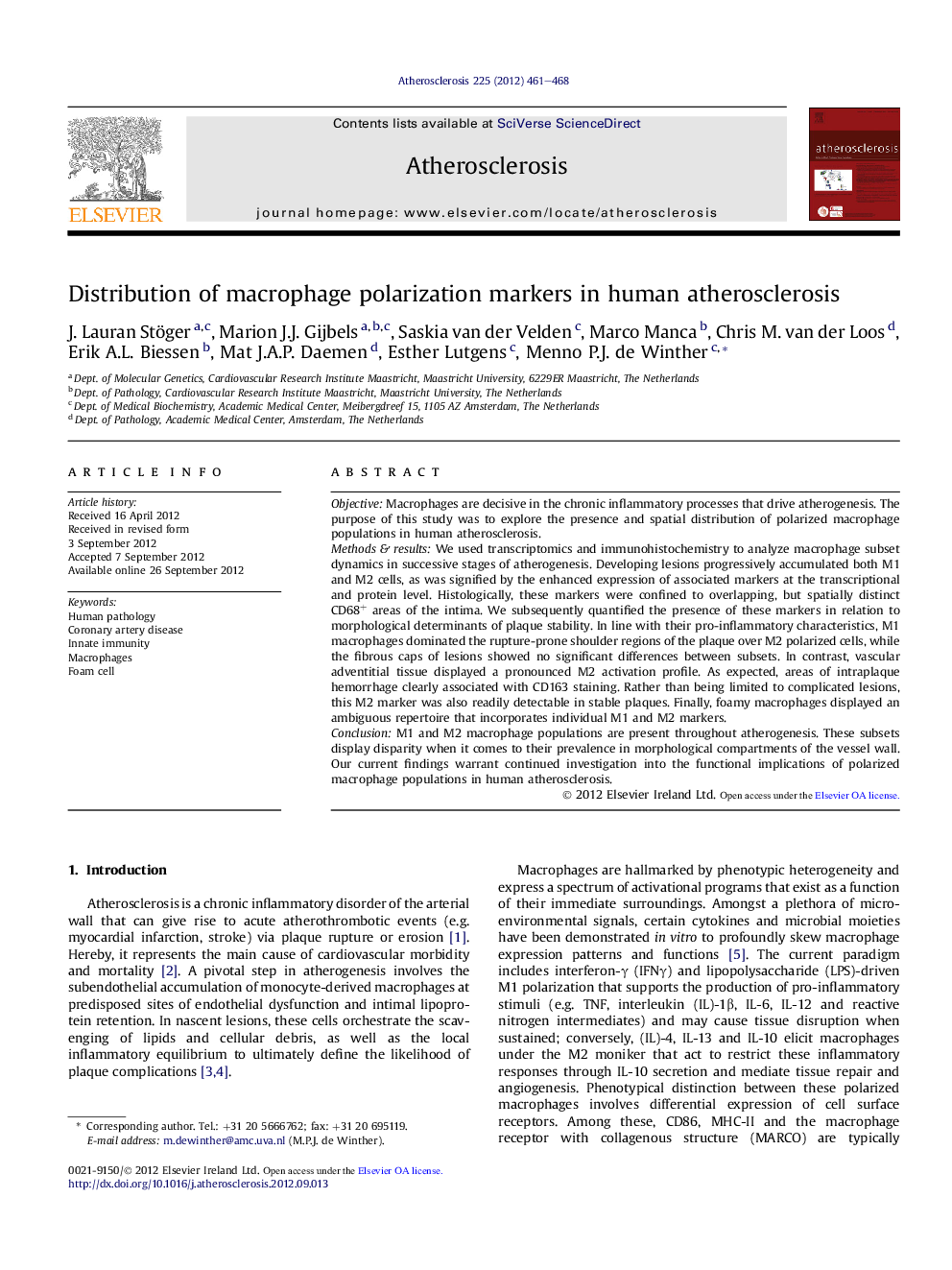| Article ID | Journal | Published Year | Pages | File Type |
|---|---|---|---|---|
| 5948346 | Atherosclerosis | 2012 | 8 Pages |
ObjectiveMacrophages are decisive in the chronic inflammatory processes that drive atherogenesis. The purpose of this study was to explore the presence and spatial distribution of polarized macrophage populations in human atherosclerosis.Methods & resultsWe used transcriptomics and immunohistochemistry to analyze macrophage subset dynamics in successive stages of atherogenesis. Developing lesions progressively accumulated both M1 and M2 cells, as was signified by the enhanced expression of associated markers at the transcriptional and protein level. Histologically, these markers were confined to overlapping, but spatially distinct CD68+ areas of the intima. We subsequently quantified the presence of these markers in relation to morphological determinants of plaque stability. In line with their pro-inflammatory characteristics, M1 macrophages dominated the rupture-prone shoulder regions of the plaque over M2 polarized cells, while the fibrous caps of lesions showed no significant differences between subsets. In contrast, vascular adventitial tissue displayed a pronounced M2 activation profile. As expected, areas of intraplaque hemorrhage clearly associated with CD163 staining. Rather than being limited to complicated lesions, this M2 marker was also readily detectable in stable plaques. Finally, foamy macrophages displayed an ambiguous repertoire that incorporates individual M1 and M2 markers.ConclusionM1 and M2 macrophage populations are present throughout atherogenesis. These subsets display disparity when it comes to their prevalence in morphological compartments of the vessel wall. Our current findings warrant continued investigation into the functional implications of polarized macrophage populations in human atherosclerosis.
⺠We assessed macrophage subsets in human plaques through transcriptomics and IHC. ⺠Signatures for M1 and M2 macrophage subsets persist throughout plaque progression. ⺠M1 and M2 macrophages display different distribution patterns in the vessel wall. ⺠M1 macrophages dominate plaque shoulders, a predilection site for rupture. ⺠Macrophage polarization state could hold substantial influence over plaque outcome.
